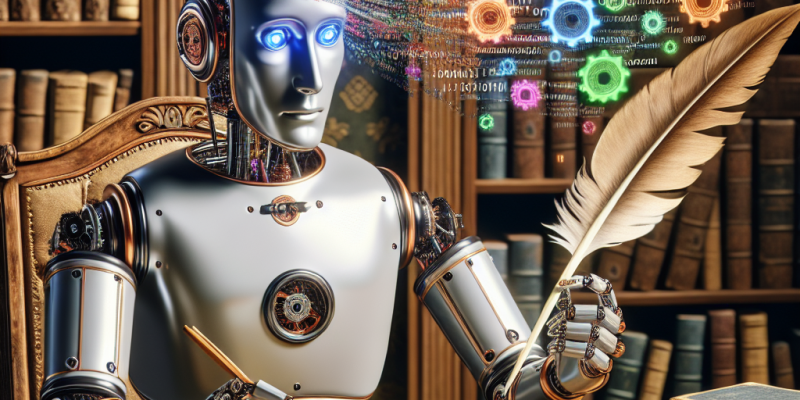Can Machines Really Understand Us? The Challenges and Triumphs of NLP

Can Machines Really Understand Us? The Challenges and Triumphs of NLP
In our technologically advanced age, the intersection of communication and artificial intelligence has given rise to an intriguing question: Can machines truly understand human language? As natural language processing (NLP) continues to advance, it is essential to explore both the challenges it faces and the remarkable triumphs it has achieved in its quest to bridge the gap between human and machine communication.
The Essence of Natural Language Processing
Natural Language Processing is a subfield of artificial intelligence that focuses on the interaction between computers and humans through natural language. It encompasses a range of tasks, from simple keyword recognition to complex sentiment analysis and language translation. At its core, NLP strives to facilitate understanding, generation, and interpretation of human language by machines.
The rapid progress in this area is evident. NLP powers everything from voice-activated virtual assistants like Siri and Alexa to chatbots that can handle customer service inquiries. However, understanding the nuances of human language remains a formidable challenge for even the most sophisticated AI systems.
The Challenges of NLP
-
Ambiguity and Context Dependence: One of the primary obstacles in NLP is the inherent ambiguity of human language. A word may have multiple meanings depending on context—consider the word “bank,” which can refer to a financial institution or the side of a river. Machines often struggle to accurately discern meaning without extensive background knowledge or contextual clues.
-
Idiomatic Expressions and Colloquialisms: Human language is replete with idioms that often do not translate literally. Phrases like “kick the bucket” can confuse machines that rely on straightforward interpretation. Capturing the essence of such expressions requires a deep semantic understanding that machines are still learning to achieve.
-
Cultural Nuances: Language is deeply intertwined with culture; phrases that may be commonplace in one language can be completely foreign in another. Consequently, for NLP systems to be effective on a global scale, they must not only recognize language differences but also cultural contexts.
- Emotional Nuance and Tonality: Understanding the emotional tone of a conversation is critical for effective communication. Sarcasm, for instance, can completely alter the intended message, yet machines often struggle to interpret these nuances correctly. This challenge becomes particularly pronounced in text-based communication, where vocal inflection and body language are absent.
Triumphs of NLP
Despite these challenges, the field of NLP has seen remarkable advancements, especially in recent years, thanks to the integration of machine learning and deep learning techniques.
-
Transformers and Pre-trained Models: The introduction of transformer architectures, particularly models like BERT (Bidirectional Encoder Representations from Transformers) and GPT (Generative Pre-trained Transformer), has revolutionized NLP. These models allow machines to process language more contextually and semantically, achieving unprecedented levels of understanding in tasks like sentiment analysis, translation, and text summarization.
-
Improved Language Generation: Advances in NLP have led to significant improvements in language generation capabilities. AI can now create coherent and contextually appropriate text, making it possible to generate articles, poetry, and even code with minimal human input. The ability for machines to produce human-like text has sparked debates about authenticity and ethical considerations in content creation.
-
Conversational Agents: Virtual assistants have become more adept at engaging in natural dialogue with users, leading to increased adoption for personal and professional use. Advances in NLP allow these agents to remember context over the course of a conversation, making interactions feel more fluid and human-like.
- Multilingual Capabilities: Natural Language Processing is becoming increasingly multilingual, enabling machines to understand and translate between multiple languages. This capability is vital in our globalized society, allowing for more effective communication across linguistic boundaries.
The Road Ahead
Despite the strides made in NLP, the journey is far from over. Current AI models often excel in limited domains but struggle with broader applications and understanding the subtleties of human interactions. Researchers are constantly testing the thresholds of what machines can comprehend and how they can better mimic human understanding.
Ethics also plays a crucial role in the future of NLP. As machines become more sophisticated in their understanding of language and emotional cues, the potential for misuse grows. Ensuring that NLP technologies are used responsibly and ethically will be paramount.
Conclusion
As we delve deeper into the capabilities of natural language processing, the question remains: Can machines truly understand us? While we have made significant progress, achieving a level of understanding that mimics human cognition is still a work in progress. The challenges of ambiguity, cultural nuances, and emotional understanding underscore the complexity of human language. However, with continued research and innovation, the triumphs of NLP pave the way for a future where machines can engage with language in increasingly sophisticated and meaningful ways. As we navigate this uncharted territory, the collaboration between humans and machines holds the potential to unlock new dimensions of communication and understanding.














